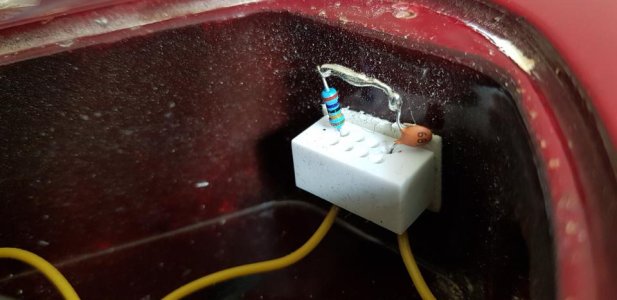This is a good point. It would be helpful if people said what technique was used with what pup configuration. Ie., humbuckers, P-90's, or singles. Inquiring minds want to know.
Well... When I've mentioned the Kinman treble bleed circuit as my "go to" recipe, I was implicitely refering to Fender style single coils, since the Kinman TB was initially designed for them...
Now and as presupposed by some answers from our fellow members above, a capacitor alone works well with "high inductance" pickups: humbuckers or P90's.
That said and I was trying to tell it in my previous answer, how a treble bleed behaves is far to depend only on pickups configuration! A same TB will have different effects with 250k or 500k pots, 330pF or 1nF cable capacitance, 1M or 500k input impedance (so if you plug in a Tube Screamer or straight in a Marshall JVM, a same treble bleed won't do the same thing than in a regular 1M input for guitars)... All there factors should be took in account, ideally. IME and IMO. YMMV.
Anyway:
-the higher the value of a treble capacitor, the most high mid frequencies it will reproduce when the volume is lowered. That's why Kinman favors high value caps (1200pF) in series with a resistor: it gives beefier mids when the volume control is lowered and avoids thin weak sounds. The resistor is there to give a rounder shape to the resonant peak, in order to make it not too "present";
-as a matter of fact, a resistor has opposite influences if it's in series or in parallel with the treble bleed cap... In series, it will tame the action of the cap. In parallel, it will enhance it... that's why the Duncan recipe relies on low value caps: with a high capacitance treble bleed, the parallel resistor would make the sound way too "peaky" when the volume is lowered.
..example of indirect consequence of all this nonsense: if a 250k volume pot is set @ "half resistance" (125k, 5/10 for a lin pot), a 1200pF in series with a 120k resistor should have almost the same effect than a 120pF in parallel with the same 120k resistor....

FWIW: another wordy attempt to share.

Might post a couple of 5spice sims if time permits... In the meantime, Artie, good luck in your experiments.

